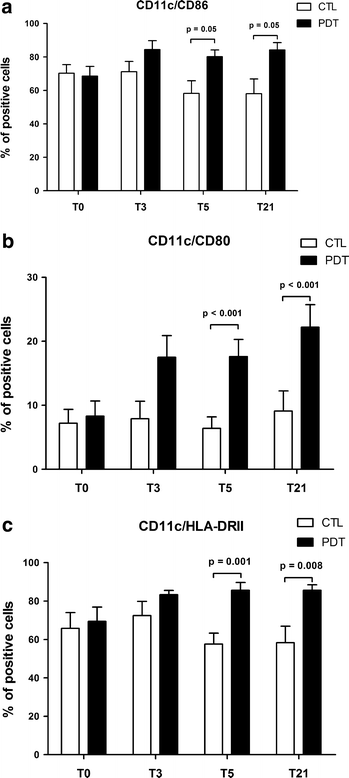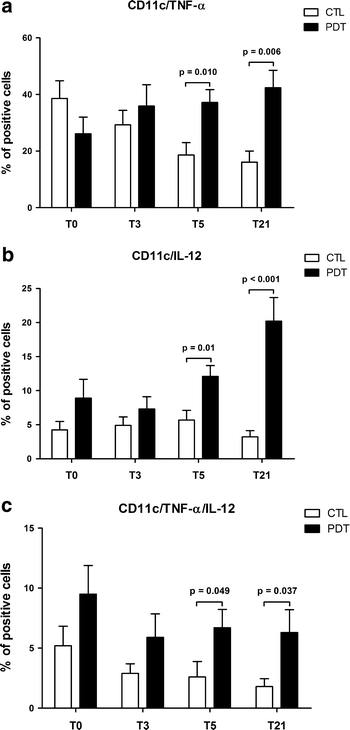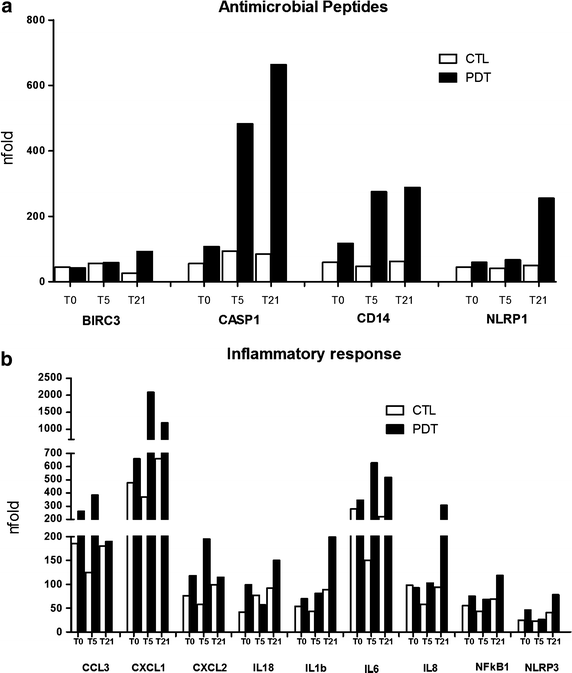Immunomodulatory activity of pidotimod administered with standard antibiotic therapy in children hospitalized for community-acquired pneumonia
- PMID: 26335787
- PMCID: PMC4559022
- DOI: 10.1186/s12967-015-0649-z
Immunomodulatory activity of pidotimod administered with standard antibiotic therapy in children hospitalized for community-acquired pneumonia
Abstract
Background: Several attempts to improve immune function in young children have been made and encouraging results have been collected with pidotimod (PDT), a synthetic dipeptide molecule that seems to have immunomodulatory activity on both innate and adaptive responses. Until now, the effects of PDT on the immune system have only been studied in vivo after long-term administration to evaluate whether its immunomodulatory activity might prevent the development of infections. This study was planned to evaluate the immunomodulatory activity of PDT administered together with standard antibiotic therapy in children hospitalized for community-acquired pneumonia (CAP).
Methods: A total of 20 children hospitalized for community-acquired pneumonia (CAP) were randomized at a 1:1 ratio to receive either standard antibiotics plus pidotimod (PDT) or standard antibiotics alone to evaluate the immunomodulatory activity of PDT. Blood samples for the evaluation of immunological parameters were drawn at the time of recruitment (T0) (i.e., before therapy administration), at T3 and T5 (i.e., 3 and 5 days after the initiation of therapy) as well as at T21 (i.e., 7 days after the therapy ended).
Results: Following pneumococcal polysaccharide stimulation, the percentage of dendritic cells (DCs) expressing activation and costimulatory molecules was significantly higher in children receiving PDT plus antibiotics than in the controls. A significant increase in tumor necrosis factor-α and/or interleukin-12 secretion and expression of toll like receptor 2 was observed in PDT-treated children compared with controls; this was followed by an increased release of proinflammatory cytokines by monocytes. In the PDT-treated group, mRNA expression of antimicrobial peptides and genes involved in the inflammatory response were also augmented in comparison with the controls.
Conclusions: These results demonstrate, for the first time, that PDT administered together with standard antibiotics is associated with a favorable persistent immunomodulatory effect in children with CAP.
Figures




Similar articles
-
Immunomodulatory effects of pidotimod in adults with community-acquired pneumonia undergoing standard antibiotic therapy.Pulm Pharmacol Ther. 2017 Jun;44:24-29. doi: 10.1016/j.pupt.2017.03.005. Epub 2017 Mar 14. Pulm Pharmacol Ther. 2017. PMID: 28302543 Clinical Trial.
-
Efficacy and safety of pidotimod in the treatment of recurrent respiratory infections in children.Arzneimittelforschung. 1994 Dec;44(12A):1480-4. Arzneimittelforschung. 1994. PMID: 7857347 Clinical Trial.
-
Pidotimod, an immunostimulant in pediatric recurrent respiratory tract infections: A meta-analysis of randomized controlled trials.Int Immunopharmacol. 2019 Feb;67:35-45. doi: 10.1016/j.intimp.2018.11.043. Epub 2018 Dec 7. Int Immunopharmacol. 2019. PMID: 30530167 Review.
-
Pidotimod: a reappraisal.Int J Immunopathol Pharmacol. 2009 Apr-Jun;22(2):255-62. doi: 10.1177/039463200902200201. Int J Immunopathol Pharmacol. 2009. PMID: 19505378 Review.
-
[Effectiveness of pidotimod in combination with bacterial lysates in the treatment of the pfapa (periodic fever, aphthous stomatitis, pharyngitis, and cervical adenitis) syndrome].Minerva Pediatr. 2015 Jun;67(3):219-26. Minerva Pediatr. 2015. PMID: 25941128 Italian.
Cited by
-
Immunostimulants in respiratory diseases: focus on Pidotimod.Multidiscip Respir Med. 2019 Nov 4;14:31. doi: 10.1186/s40248-019-0195-2. eCollection 2019. Multidiscip Respir Med. 2019. PMID: 31700623 Free PMC article. Review.
-
Photodynamic Therapy for Treatment of Disease in Children-A Review of the Literature.Children (Basel). 2022 May 10;9(5):695. doi: 10.3390/children9050695. Children (Basel). 2022. PMID: 35626872 Free PMC article. Review.
-
Pidotimod: In-depth review of current evidence.Lung India. 2019 Sep-Oct;36(5):422-433. doi: 10.4103/lungindia.lungindia_39_19. Lung India. 2019. PMID: 31464215 Free PMC article. Review.
-
Antibiotic therapy, supportive treatment and management of immunomodulation-inflammation response in community acquired pneumonia: review of recommendations.Multidiscip Respir Med. 2017 Oct 5;12:26. doi: 10.1186/s40248-017-0106-3. eCollection 2017. Multidiscip Respir Med. 2017. PMID: 29034094 Free PMC article. Review.
-
Mpox (formerly monkeypox): pathogenesis, prevention, and treatment.Signal Transduct Target Ther. 2023 Dec 27;8(1):458. doi: 10.1038/s41392-023-01675-2. Signal Transduct Target Ther. 2023. PMID: 38148355 Free PMC article. Review.
References
Publication types
MeSH terms
Substances
LinkOut - more resources
Full Text Sources
Other Literature Sources
Medical
Miscellaneous

